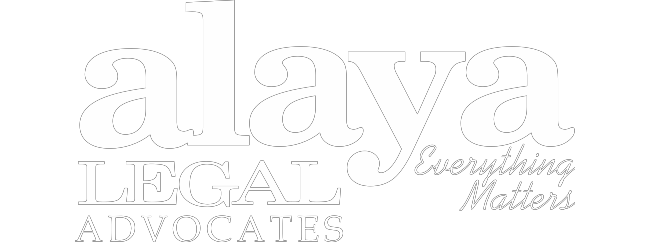| Reference Date | Version | August 17, 2023 | 1.0 |
| Keywords | Automation, artificial intelligence, renewable energy, nuclear weapons, sustainability |
| Jurisdiction | India |
To build a sustainable society, we need to come up with alternative energy sources; hence, balancing automation and human efforts is very important. Expert guidance from corporate legal advisor, energy and sustainability legal advisor, IT and AI legal advisor is advisable to ensure adherence to laws and regulations while incorporating Artificial Intelligence (AI) in business.
Introduction
Automation means applying machines to tasks previously performed by humans or tasks that would be otherwise impossible. The term ‘automation’ was coined in the automobile industry in 1946 to describe the increased use of automatic devices and controls in mechanized production lines.1
To understand automation, we need to see the extent of its deskilling and reskilling people. Research by Geographers has shown that industry-wise labour requirements have changed due to automation, but such change also depends on where the activity is conducted. For example, the result in Australia would be different from India. If we take the example of farming, automation can help reduce the burden on farmers in Australia, where labour is scarce. In contrast, if we take the example of India, farming gives employment to a large section of the population who might not get reskilled.
When it comes to digital automation, it affects labour differently, and there is a division between who is doing production and who is at the receiving end.2
When we talk about automation, we must also talk about Artificial Intelligence, which has become very relevant. The British “godfather of AI”, Dr. Geoffrey Hinton, quit Google this year to speak more openly about the “existential risk” that advanced AI poses, while the Tesla chief executive, Elon Musk, was among thousands of signatories of a letter calling for a pause in building robust AI systems.
Regarding this controversial issue, the UN secretary-general, António Guterres, said the UN was the “ideal place” for establishing a global standard and approach to AI as calls grow for an international effort to moderate the technology’s development.
Under the UN-brokered treaty on the non-proliferation of nuclear weapons, nuclear-armed countries are committed to not helping non-nuclear weapon states acquire or build such military technology.3
Despite different concepts, Automation and Artificial Intelligence have the same objective and purpose behind their invention. Automation and AI aim to improve efficiency and reduce the scope for errors. They are used to undertake tasks that humans can perform. It is a matter of discussion and opinion whether Automation and AI replace people or change the nature of skills required in people.
The impact of automation on society
One of the significant usages of Automation is in the renewable energy sector. Nations are exploring renewable energy for a more sustainable future. However, utilizing renewable energy takes work. One of the difficulties is their unpredictable nature; hence, weather forecasting is crucial. Here, automation plays a role by giving correct predictions of the weather. In the renewable energy sector, automation for better grid management and efficiency, operation, and maintenance of renewable energy systems as well. Real-time monitoring and control systems enabled by automation give a rapid response to changes in weather conditions, optimizing energy production.4
The purpose of Automation is deemed to be for better production, economic development, and easing specific cumbersome jobs. The purpose will be lost if the Automation of skills dominates human skills. Hence, Automation should be based on the principle of human-centricity: “Humans should never be subservient to machines and automation, but machines and automation should be subservient to humans.”
Following are the criteria that can structure and guide the use of automation:5
- time-lapse,
- performance degradation,
- age,
- disability- and,
- inexperience-related limitations of operators to increase their working capabilities.
Even though there has been a tremendous increase in the automation field, it is only helpful for some sectors. Various surveys and studies have been conducted to know the potential of automation and to see to what extent it is technically feasible in a particular field of employment.
According to one study conducted in the United States, the technical feasibility of automation can be checked using five criteria: Cost to automate, relative scarcity, skills, cost of workers, and regulatory and social acceptance.6
To mention the benefits of automation, it reduces labour costs and results in fewer errors in the output. Human contact would be preferred when it comes to fields like medicine, teaching, management of people, emotional intelligence, and judgment. Therefore, according to one theory, automation changes the nature of work done by people but does not replace people. There has been a reduction in Clerical work through automation, and people could focus more on quality work like client dealing. Automation increased demand growth in other fields of work, and unemployment was not the result.
In sectors like food, the average wage of people is meager; hence automation may need to make more sense. The field most suitable for automation is middle-skill jobs, and the least suitable is managing and developing people.
In many sectors, automation can be beneficial, for example, in domestic labour. Very little attention has been given to automation and technological innovation in domestic labour.
Due to the norms of ‘lack of productivity’ in capitalism, little has been invested in household labour.7
The question is whether automation will generate as much employment after reskilling and what will happen to people who are unable to be reskilled. The worry is that we will become enslaved to our machines even if reskilled. Brynjolfsson (American academic, author, and inventor) and McAfee (co-director of the MIT Initiative on the Digital Economy) write that “technological progress is going to leave behind some people, perhaps even a lot of people, as it races ahead”. They write that “there’s never been a worse time to be a worker with “ordinary” skills and abilities to offer, because computers, robotics and other digital technologies are acquiring these skills and abilities at an extraordinary rate”.8
Balancing negative and positive aspects is essential while progressing in the field of automation.
Automation and Artificial Intelligence
When we talk about automation, we also must talk about Artificial Intelligence, which has become very relevant. The British “godfather of AI”, Dr. Geoffrey Hinton, quit Google this year to speak more openly about the “existential risk” that advanced AI poses, while the Tesla chief executive, Elon Musk, was among thousands of signatories of a letter calling for a pause in building powerful AI systems.
Regarding this controversial issue, the UN secretary-general, António Guterres, said the UN was the “ideal place” for establishing a global standard and approach to AI as calls grow for an international effort to moderate the technology’s development.
Under the UN-brokered treaty on the non-proliferation of nuclear weapons, nuclear-armed countries are committed to not helping non-nuclear weapon states acquire or build such military technology.9
Any discussion on AI would be complete with reference to the proposal for a Regulation of the European Parliament and of the Council laying down harmonised rules on artificial intelligence (Artificial Intelligence Act) and amending certain Union legislative acts.
The proposed legislation, the Artificial Intelligence Act, primarily focuses on strengthening rules with respect to data quality, accountability, transparency, and human oversight. It seeks to address ethical questions and implementation challenges across sectors ranging from healthcare and education to finance and energy. Critics of the proposed act have argued that different regulations should apply to the different actors in the generative AI value chain and that instead of regulating generative AI itself, there should be a shift towards regulating based on use cases of generative AI.
Conclusion
Human-automation symbiosis should be carried out very intelligently and is necessary to achieve sustainable development in society. Work performance heightens when humans and smart machines work together, enhancing each other’s strengths. This collaboration should be used as an advantage for society, and businesses should be redesigned to support this. According to some studies, companies that automate their operations mainly to cut their workforces will see only short-term productivity gains.10
If the benefits of Automation are shared in a fair manner, it can help build a strong economy where wealth, income, and working time are distributed in an equitable manner. For this to happen, more significant support needs to be extended to firms across sectors by the government. This shall enable the firms to improve their management, integrate newer technologies and also provide a strong voice to the employees that shall help shape the use of technology at work. The system of skills also needs to be reformed in order to ensure that in this era of great human-machine collaboration, people can still thrive.
New public institutions are also needed to regulate and keep society informed on the manner in which automated technologies are being used while ensuring that the ethical issues being raised by robotics and artificial intelligence are responded to proactively.11
However, automation is only possible in some sectors. The purpose of automation should be to change the nature of the work people do and not take away their jobs. Hence, considering its negative impact on employment is also essential.
In areas like domestic labour, using automation is beneficial as it will increase the contribution of women in other sectors as well, resulting in economic growth.
Automation is also helpful in places that are unhealthy and dangerous for people to work, for example, the process for utilization of nuclear power as an energy source. As we all know, to build a sustainable society, we need to come up with alternative energy sources; hence, balancing automation and human efforts is very important. A check must be kept on automation and going further in Artificial Intelligence to ensure that they do not dominate but help build a conducive environment for people.
Legal Support in the Technology, Infrastructure and Energy Sector:
Founded in 2003 by Divjyot Singh and Suniti Kaur, Alaya Legal takes pride in its boutique practice, encompassing Litigation & Arbitration, Corporate and Commercial, Energy & Sustainability and Information Technology (IT) and Artificial Intelligence (AI). The firm offers tailored solutions to its clients to align with their growth objectives, by leveraging their expertise and experience in these sectors.
If you are interested in related topics, reach out for information or support to our legal firm in NCR with expertise in handling corporate transactions, renewable energy projects, documentation and arbitration matters related thereto. Our team of corporate lawyers and infrastructure legal advisors would be happy to understand your specific requirements and work with your team to address various issues related to matters. Please feel free to contact us for more information on how our legal firm in NCR can help.
Sources:
[1] Automation | Technology, Types, Rise, History, & Examples | Britannica
[5] id Romero, Ovidiu Noran, Johan Stahre, Peter Bernus & Åsa Fast-Berglund, Towards a Human-Centred Reference Architecture for Next Generation Balanced Automation Systems: Human-Automation Symbiosis, 2015,Towards a Human-Centred Reference Architecture for Next Generation Balanced Automation Systems: Human-Automation Symbiosis | SpringerLink
[6] id Romero, Ovidiu Noran, Johan Stahre, Peter Bernus & Åsa Fast-Berglund, Towards a Human-Centred Reference Architecture for Next Generation Balanced Automation Systems: Human-Automation Symbiosis, 2015,Towards a Human-Centred Reference Architecture for Next Generation Balanced Automation Systems: Human-Automation Symbiosis | SpringerLink
[7] Sarah Elsie Baker*Post-work Futures and Full Automation: Towards a Feminist Design Methodology.Post-work Futures and Full Automation: Towards a Feminist Design Methodology (degruyter.com)
[10] By H. James Wilson and Paul R. Daugherty, Collaborative Intelligence: Humans and AI Are Joining Forces, 2018,How Humans and AI Are Working Together in 1,500 Companies (hbr.org)
[11] Mathew Lawrence, Carys Roberts, Loren King, Managing automation: employment, inequality and ethics in the digital age, 20 Dec 2017, Institute for Public Policy Research. Managing automation: employment, inequality and ethics in the digital age (apo.org.au)




























